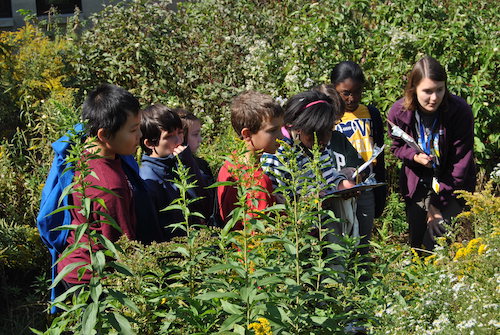Plant Identification and Ecology

Plant Identification and Ecology
In this program, students explore a forest community using the tools and concepts of plant identification, classification and ecology. This is a seasonally themed lessen, and based on the timing of your group’s visit, curriculum connection requirements, and/or interests, there are two areas of program focus from which to choose:
1. Trees and Shrubs
2. Wildflowers
This multifaceted program experience starts with walking the nature trails to observe and identify trees, shrubs, or wildflowers. Students will investigate different leaf shapes, patterns, and textures in order to learn to differentiate between species. Students will learn how to use microscopes to closely examine identification features and adaptations of plants in our region. The program may include a sensory “scavenger hunt” of various trees and shrubs, and/or wildflowers.
Grade Levels, Program Length, and Season
- Appropriate for Grade Level 3-12.
- The program typically lasts 1 1/2-2 hours, though the length and content can be adapted to suit the needs of your group.
- This program is offered year-round.
Program Description and Activities - Trees and Shrubs
Students studying trees and shrubs will learn to distinguish between deciduous and evergreen trees, and how to identify live specimens from each of those plant groups. Students may also practice:
- Using the characteristics of the “three Bs” (bark, branches, and buds) to identify and classify trees and shrubs in the field.
- Using dichotomous keys to identify a small selection of trees and shrubs from twig and branch samples.
- Investigating plant communities including a “young” (early successional) forest, an “old” (late successional) forest, and a meadow.
- Observing the various “layers” of the forest from treetop to forest floor.
Program Description and Activities - Wildflowers
For students studying various wildflowers, they will learn to determine their unique floral structures, habitat needs, adaptations for pollination, seed dispersal techniques, and identification characteristics. Students studying wildflowers may also practice:
- Observing and discussing evidence of energy flow from plants-to-insects-to-birds and other animal life of the forest community.
- Using dichotomous keys to identify wildflowers in the field.
- Observing and discussing ecological interrelationships between the native wildflowers we identify and their insect pollinators.
- Differentiating between wildflower species that are native, non-native, and invasive in southeast Michigan.
